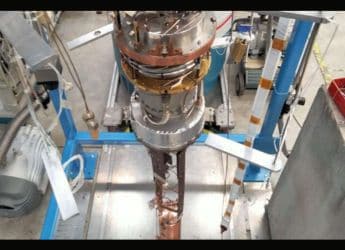- Home
- Others
- Others Features
- Firecrackers and Fog Men: Facing the Winter With the Northern Railway
Firecrackers and Fog Men: Facing the Winter With the Northern Railway

Our trains are getting steadily more high-tech, with a proposed bullet train project in Gujarat finally set to take Indian railways into the 21st century, and Southern Railway's bio-toilets project that could solve the big problem of waste disposal.
But even now, every winter sees thousands upon thousands of people delayed - and even some terrible accidents taking place - as Northern India gets blanketed with fog reducing visibility until trains can barely crawl along safely.
Airplanes use the sophisticated Automated Landing System (ALS) based on radar technology to determine safe lines of approach. With these systems in place, a plane can land even when the visibility is less than 600m. Trains in India on the other hand rely on just one thing - the driver's eyesight. That, and a system of firecrackers and fog men that doesn't exactly scream high-tech.
A few years ago, the government first started to test Fog Safety Devices (FSD) and in January 2014, the Northern Railway announced that it was going to fit these devices in 350 more trains. However, these devices are just audio warnings that tell the driver when a signal or a station is coming up, and therefore his eyes need to be on the tracks at all times, watching out for obstructions in heavy fog that can reduce visibility to only a couple of meters.
According to Sunil Kumar, a Special Advisor to the Railways Ministry and the former Advisor (Safety) to the Railways Ministry, the challenges are much higher for trains.
"A plane system works in the air with no likely obstruction," says Kumar. "The rail system is on the ground, with manned and unmanned level crossings, while airports are secured, and the plane has to negotiate the fog for just 1-2 kilometres. A rail obstruction can come at any time - a tree could fall on the tracks for example, or animals might be crossing, and you can't detect that sort of obstruction electronically."
For this reason, Kumar says that the best safety system is to stick to driving at a speed where the driver of the locomotive can see and manage the chain on the train. This is something that holds true in many countries around the world, and not just in India.
For example, the British rail is now investing in the European Rail Traffic Management System, which will bring signalling inside the trains - so far, the British also use fog signalling devices which ring a bell when approaching signals.
But it's another British technique that we continue to use in India, and have done so for decades - fire crackers. Referred to as "Detonators (pathakas)" in this 2014 fog warning circular of the North Western Railway, these fire crackers play an essential role in keeping trains safe in the fog.
"We would use manual systems like putting a reflective tape on the track near the station, or putting a cracker on the track that bursts when the train crosses over it," says Kumar. "We used to employ a fog man, and on days when the fog was thick and the driver of the locomotive would not be able to see the signals, the fog men run out each time a train passes, and put crackers at the 300m and 600m mark. This way the train knows that it needs to control its speed."
When a driver hears the firecrackers, he can start slowing down; if the only warning he receives is when he sees the station then the train will have to stop very suddenly, which is obviously unsafe. But there are limitations to the firecrackers and fog men - for example, a thunderstorm also has low visibility, but in such a scenario, the noise of the storm will make it impossible to hear the fireworks. The FSDs are useful in different weather conditions, and not just the fog, because the audio warning comes from inside the locomotive.
The FSDs are a simple audio system like walkie-talkies and they can be put in a train when needed, to call out the information as required - to announce that a signal is near, or a station is coming up. These were first brought to India in 2010, Kumar recalls, but they were not widely deployed at the time.
"We started deploying in 2010, and the devices were made by vendors in India," says Kumar. "But they did not get too proliferated. They were used in some sectors, the Ambala line, Allahabad, in North India basically. We bought 3-4,000 and put them in some trains, but it didn't really pick up."
There were numerous reasons for this - for one thing, the FSDs worked on a GPS system which was not without errors. The FSDs keep tracking the train's co-ordinates and the speed it is moving at, to calculate how much time remains until the next signal or station. They use this information to give audio warnings to the drivers.
Unfortunately, some of the early units did not have the correct co-ordinates, and therefore could not function properly. And the made-in-India devices also ran into supply issues as production slowed. Making matters worse, the drivers didn't particularly like the FSDs either, Kumar says. "It was not a visual warning, there were too many audio inputs," he says. "It would get a little irritating, and it will keep on repeating the instructions even when the track was clear. The drivers would be upset, because after all, they can see the signal clearly in front of them and this box keeps making sounds anyway."
But perhaps most surprising is that the storage of these devices was seen as a major problem. "These are only required for a few months, and that too only in part of India," Kumar explains. "And they need to be maintained, they need to be recharged [since they are battery powered systems], and they needed to be stored when they were not in use."
Despite these problems, until a fully computerised system can place full signalling information inside the trains, the FSDs remain a good compromise. Even then, while such a system will be useful for drivers, it won't be a complete solution, because as Kumar points out, you can't exactly monitor for a tree branch falling across a track.
For this reason, it's going to be a long time before train drivers can stop listening for the sound of firecrackers as they ply their routes.
Catch the latest from the Consumer Electronics Show on Gadgets 360, at our CES 2026 hub.
Related Stories
- Samsung Galaxy Unpacked 2025
- ChatGPT
- Redmi Note 14 Pro+
- iPhone 16
- Apple Vision Pro
- Oneplus 12
- OnePlus Nord CE 3 Lite 5G
- iPhone 13
- Xiaomi 14 Pro
- Oppo Find N3
- Tecno Spark Go (2023)
- Realme V30
- Best Phones Under 25000
- Samsung Galaxy S24 Series
- Cryptocurrency
- iQoo 12
- Samsung Galaxy S24 Ultra
- Giottus
- Samsung Galaxy Z Flip 5
- Apple 'Scary Fast'
- Housefull 5
- GoPro Hero 12 Black Review
- Invincible Season 2
- JioGlass
- HD Ready TV
- Laptop Under 50000
- Smartwatch Under 10000
- Latest Mobile Phones
- Compare Phones
- OPPO Reno 15 Pro Max
- Honor Win RT
- Honor Win
- Xiaomi 17 Ultra Leica Edition
- Xiaomi 17 Ultra
- Huawei Nova 15
- Huawei Nova 15 Pro
- Huawei Nova 15 Ultra
- Asus ProArt P16
- MacBook Pro 14-inch (M5, 2025)
- OPPO Pad Air 5
- Huawei MatePad 11.5 (2026)
- Xiaomi Watch 5
- Huawei Watch 10th Anniversary Edition
- Acerpure Nitro Z Series 100-inch QLED TV
- Samsung 43 Inch LED Ultra HD (4K) Smart TV (UA43UE81AFULXL)
- Asus ROG Ally
- Nintendo Switch Lite
- Haier 1.6 Ton 5 Star Inverter Split AC (HSU19G-MZAID5BN-INV)
- Haier 1.6 Ton 5 Star Inverter Split AC (HSU19G-MZAIM5BN-INV)














